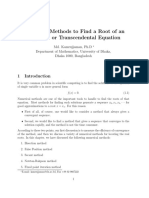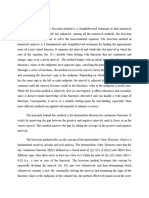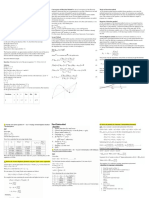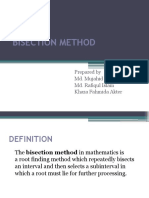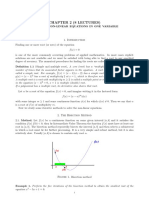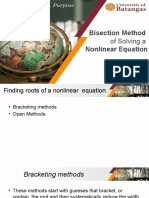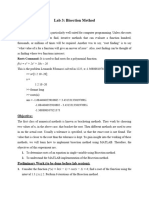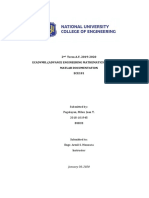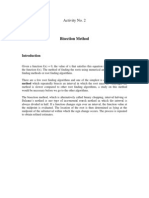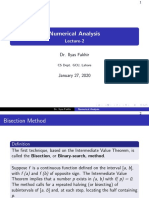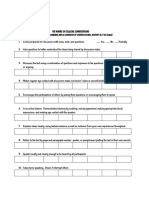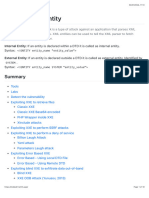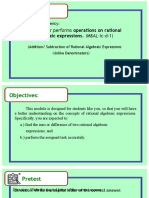0% found this document useful (0 votes)
25 views11 pagesAssignment 2 VBA Function
The document provides a comprehensive overview of the bisection method, a numerical technique for finding roots of continuous functions based on the Intermediate Value Theorem. It discusses the method's historical background, mathematical foundation, advantages, limitations, and applications in various fields such as engineering and economics. Additionally, it includes a step-by-step algorithm, flowchart, and VBA implementation for practical use in Excel.
Uploaded by
bimal2414s.mstrCopyright
© © All Rights Reserved
We take content rights seriously. If you suspect this is your content, claim it here.
Available Formats
Download as PDF, TXT or read online on Scribd
0% found this document useful (0 votes)
25 views11 pagesAssignment 2 VBA Function
The document provides a comprehensive overview of the bisection method, a numerical technique for finding roots of continuous functions based on the Intermediate Value Theorem. It discusses the method's historical background, mathematical foundation, advantages, limitations, and applications in various fields such as engineering and economics. Additionally, it includes a step-by-step algorithm, flowchart, and VBA implementation for practical use in Excel.
Uploaded by
bimal2414s.mstrCopyright
© © All Rights Reserved
We take content rights seriously. If you suspect this is your content, claim it here.
Available Formats
Download as PDF, TXT or read online on Scribd
/ 11








